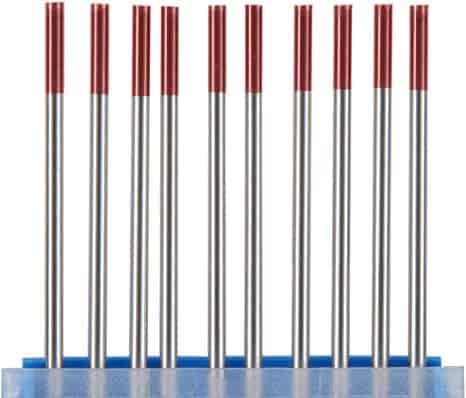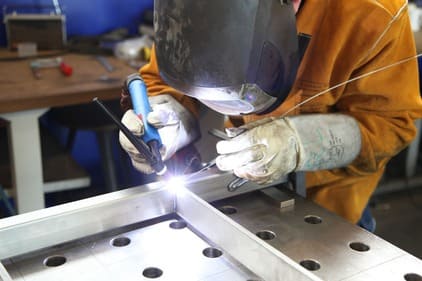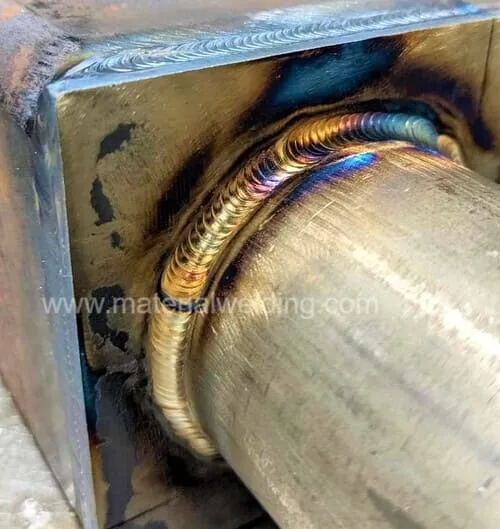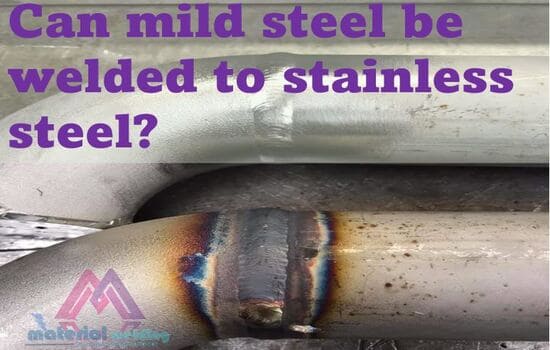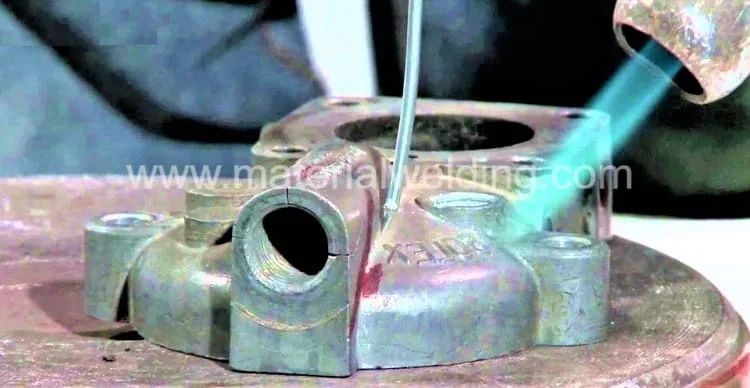There are a number of factors to consider when choosing a metal for high temperature applications or for heat treatment or any manufacturing operation.
Melting point of metals is the most important factor in these cases. metals with a higher melting point can withstand higher temperatures before beginning to degrade.
When it comes to high temperature service, metals are often the material of choice. Jet engines, turbines, rockets, furnaces, and reactors all operate at high temperatures, and the selection of the right metal is critical to ensuring safety and efficiency.
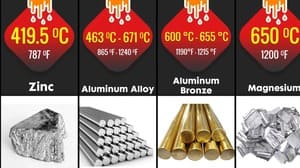
What is Melting Point of Metals?
The melting point of a metal is the temperature at which it changes state from solid to liquid. At the melting point, the molecules of a substance are in constant motion, vibrating and colliding with one another.
The energy needed to break the bonds that hold these molecules together is called the enthalpy of fusion. The enthalpy of fusion for metals is generally quite high, meaning that metals have a high melting point.
The temperature at which this occurs varies depending on the type of metal but is typically between 1,000 and 1,500 degrees Celsius.
Melting points are important in many industrial processes, such as heat treatment, welding, high temperature material selection and casting. Knowing the melting point of a metal can help ensure that it is used correctly in these applications.
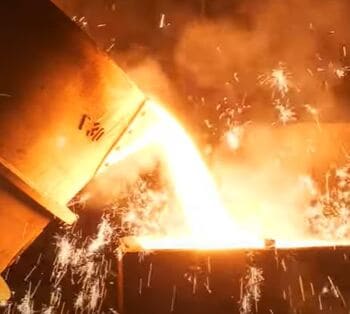
The melting point of a metal is an important property in foundry science because it determines how easily the metal can be cast into different shapes.
Why is the Metal Melting Temperature Important?
The metal melting temperature is important because it determines the point at which a metal will begin to liquefy.
As the material temperature increases it has usually:
- Rise in ductility.
- Reduction in hardness.
- Reduction in tensile strength.
- Change in microstructural properties.
- Reduction in corrosion resistance.
This is important because the liquefaction point is the temperature at which a metal will lose its structural integrity and become unable to support itself.
This is critical when designing components for high temperature applications such as in power plant, jet engines, rockets, propulsion system and nuclear plant etc., for example.
The melting temperature also determines the point at which a metal will begin to vaporize, and this is important because the vaporation point is the temperature at which a metal will begin to break down into its individual atoms.
Melting Point Temperature of Common Engineering Metals
Melting point temperature of most common engineering metals are:
- Carbon Steel*: 2590-2800°F (1420-1535°C)
- Austenitic Stainless Steel*: 1375 -1450°C
- Aluminum: 1221°F (660°C),
- Aluminum oxide: 3700°F (2038°C)
- Copper: 1948°F–1991°F (1066°C–1088°C)
- Red Brass: 1810°F–1880°F (988°C–1027°C)
- Aluminum Bronze*: 1905°F–1915°F (1041°C–1046°C)
- Cast Iron: 2100°F-2192°F (1150°C to 1200°C)
- Nickel: 2647°F (1453°C)
- Cobalt: 2719°F (1493°C)
- Titanium: 3035°F (1670°C)
- Tungsten: 6170°F (3410°C).
- Magnesium: 1202°F (650°C),
- Chromium: 3465°F (1907°C),
- Molybdenum: 4753°F (2623°C)
- Lead: 621°F (327°C)
- Zinc: 787°F (419°C)
- Sulfur: 2190°F (1200°C)
- Cupro-Nickel (70%Cu-30%Ni): 1171°C–1238°C (2140°F–2260°F)
*: Alloys of more than one metal.
Melting point of metals Table
| Metal | Melting Point (°C) | Melting Point (°F) |
|---|---|---|
| Tungsten | 3410 | 6170 |
| Rhenium | 5597 | 3083 |
| Osmium | 2928 | 5288 |
| Platinum | 1768 | 3214 |
| Gold | 1064 | 1947 |
| Iron | 1538 | 2800 |
| Aluminum | 660 | 1220 |
| Copper | 1084 | 1983 |
| Lead | 327 | 621 |
| Gallium | 29.76 | 85.57 |
| Mercury | -38.87 | -38.83 |
| Cesium | -18.69 | 28.44 |
| Nickel | 1453 | 2647 |
| Tin | 232 | 449.6 |
| Silver | 961.8 | 1763 |
| Zinc | 419.5 | 787 |
| Titanium | 1668 | 3034 |
| Chromium | 1907 | 3465 |
| Stainless steel | 1450 – 1510 | 2640 – 2750 |
Commonly used Metal Uses and their Melting Point
- Tungsten (W) – High-temperature applications, furnace linings, rocket nozzles, electrical contacts – 3410 °C (6170 °F).
- Rhenium (Re) – High-temperature alloys, aircraft and aerospace industries – 5597°F (3083°C).
- Osmium (Os) – High-temperature alloys – 5288 °F (2928 °C).
- Platinum (Pt) – Jewelry, catalytic converters, laboratory equipment – 1768 °C (3214 °F).
- Gold (Au) – Jewelry, electronic components, coins – 1064 °C (1947 °F).
- Iron (Fe) – Construction, machinery, transportation – 1538 °C (2800 °F).
- Aluminum (Al) – Construction, packaging, transportation – 660 °C (1220 °F).
- Copper (Cu) – Electrical wiring, heat exchangers, coins – 1084 °C (1983 °F).
- Lead (Pb) – Batteries, radiation shielding, ballast – 327 °C (621 °F).
- Gallium (Ga) – Low-melting alloys, electronic devices – 29.76 °C (85.57 °F).
- Mercury (Hg) – Thermometers, fluorescent lamps, switches – -38.87°F (-38.83°C).
- Nickel (Ni) – Stainless steel, batteries, coins – 1453 °C (2647 °F).
- Tin (Sn) – Tin cans, solder, bronze alloys – 232 °C (449.6 °F).
- Silver (Ag) – Jewelry, electrical contacts, coins – 961.8 °C (1763 °F).
- Zinc (Zn) – Galvanizing, brass alloys, batteries – 419.5 °C (787 °F).
- Titanium (Ti) – Aerospace, medical implants, jewelry – 1668 °C (3034 °F).
- Chromium (Cr) – Stainless steel, electroplating, pigments – 1907 °C (3465 °F).
- Stainless steel (SS) – Kitchenware, construction, medical equipment – 1450 – 1510 °C (2640 – 2750 °F).
- Cobalt (Co) – Magnetic alloys, aerospace, cutting tools – 1495 °C (2723 °F).
- Molybdenum (Mo) – High-temperature alloys, furnace linings – 2623 °C (4753 °F).
- Inconel (NiCrFe) – High-temperature alloys, furnace linings, aerospace – 1400-1450 °C (2552-2642 °F).
- Hastelloy (NiCrFeMo) – High-temperature alloys, furnace linings, chemical processing – 1400-1450 °C (2552-2642 °F).
- Monel (NiCu) – Marine applications, chemical processing, electrical components – 1300-1350 °C (2372-2462 °F).
- Invar (FeNi) – Low-expansion alloys, precision instruments – 1350-1400 °C (2462-2552 °F).
What metal has the highest melting point?
Due to its high melting point and excellent thermal conductivity, it’s also used in the production of high-temperature alloys, such as those used in aircraft and aerospace industries.
Other materials with high melting point, are Rhenium (Re) with a melting point of 5597°F (3083°C) and Osmium (Os) with a melting point of 5288 °F (2928 °C) which are also used in high-temperature applications.
Which metals melting point is the lowest?
Other metals with low melting point are Mercury (Hg) with a melting point of -38.87°F (-38.83°C) and Cesium (Cs) with a melting point of 28.44°F (-18.69°C).
Why do metals melt at high temperatures?
These electrons are held in place by electrostatic attraction between the positively charged nuclei and the negatively charged electrons.
When heat is added to a metal, the kinetic energy of the atoms increases, which causes the atoms to vibrate more and more rapidly.
As the temperature increases, the atoms move faster and faster, eventually reaching a point where they can overcome the metallic bond and slide past each other. This process is called melting, and the temperature at which it occurs is the melting point of the metal.
Melting point of Diamond
This extremely high melting point is due to the strong covalent bonds between the carbon atoms in the diamond crystal lattice.
Melting point of stainless steel 304
Melting point of 316 stainless steel
Reference:
